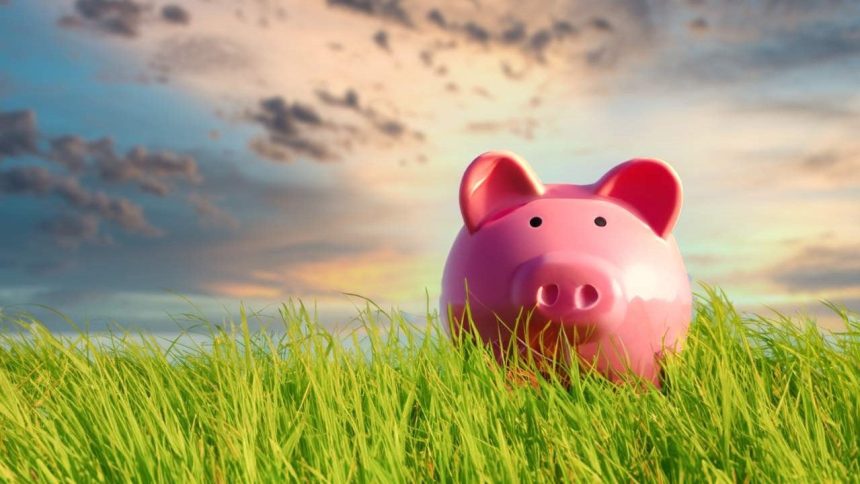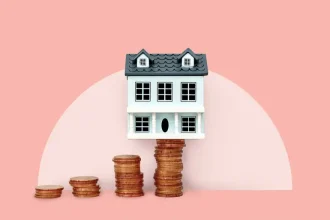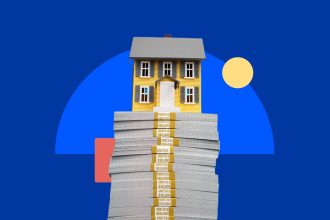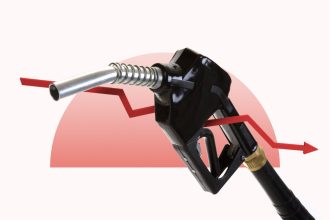As concern grows about the global climate crisis, U.S. banking customers have been demanding environmentally-conscious accounts, and banks have been increasing their offerings. But if you’re part of the growing group of Americans who want to bank green, how do you do it? And just what is green banking, anyway?
One of the most direct ways climate-conscious consumers can align their money with their values is through their bank deposits. By choosing so-called green banks and green deposit products — through which customer deposits are used exclusively to fund environmentally sustainable projects or investments — you can ensure your savings are actively supporting projects that help the planet, rather than inadvertently funding activities that harm it by supporting fossil fuel producers.
Financial institutions are responding to consumer demand for values-driven banking by significantly expanding their sustainable finance offerings. This has led to an increase of green options for customers of traditional banks, who may want certain accounts or certain deposits to go towards sustainable causes, and the rise of full-on green banks.
What are green deposits?
Green deposits are interest-bearing accounts, such as savings accounts, that the bank commits to using exclusively for environmentally friendly projects. These can include renewable energy, energy efficiency upgrades, sustainable agriculture, clean transportation, waste management and other efforts to reduce greenhouse gas emissions.
Unlike traditional deposits, which may be used by banks to fund any kind of loan or investment, green deposits are earmarked specifically for projects that meet certain sustainability criteria.
It’s important to do your research to separate real green banking from so-called greenwashing — a process in which banks promote their environmentally friendly products or investments, such as green loans or carbon-neutral initiatives, but continue to finance fossil fuels or environmentally harmful industries on a much larger scale.
Banks offering true green deposits follow a transparent framework, typically subject to third-party verification, to ensure your money is really being put to work for the environment. These frameworks specify eligible green activities, require regular reporting on where the money goes and often include annual impact assessments.
Most of these products are available only to commercial and business clients, rather than retail customers, at the largest financial institutions in the U.S., such as Bank of America, JPMorgan Chase, Citibank, US Bank and Wells Fargo. But outside the U.S., larger banks are starting to rev up their green offerings.
In 2020, London-based HSBC pledged to provide up to $1 trillion in global sustainable finance and investment by 2030. For retail customers, HSBC offers green mortgages and personal loans to support the purchase or renovation of energy-efficient homes. If these accounts gain popularity in Europe and other overseas destinations, you can bet that international banks will be looking to offer them to their U.S. clients as well.
What are green banks?
Green banks are financial institutions, or specialized departments within traditional banks, that channel capital into climate solutions and sustainable development. Many of these banks are online-only banks or offer nationwide access.
Americans hoping to go green with their banking are flocking to mission-driven banks such as Amalgamated Bank, Climate First Bank and Atmos Bank. Climate First Bank, for example, offers a personal checking account with an annual percentage yield (APY) of 4.01 percent and a personal money market account that pays 4.46 percent APY.
When you place your money in a green deposit at these financial institutions, funds are pooled and allocated to environmentally friendly projects through loans, credit enhancements or direct investments. Examples include:
- Financing residential and commercial solar installations
- Supporting energy-efficient building upgrades
- Funding clean transportation infrastructure
- Backing sustainable agriculture and forestry projects
There are also alternative financial institutions such as Spring Bank, a community development financial institution, or CDFI, with branches in New York City, and Clean Energy Credit Union, which specializes in loans for solar, electric vehicles, geothermal and other green projects, as well as checking and savings accounts. Spring Bank provides green checking and savings accounts and specializes in solar loans and financing for energy-efficient home improvements.
Some green banks have even pioneered programs that bundle smaller green investments or provide credit support to make clean energy more accessible and affordable for homeowners and businesses. NY Green Bank, for example, finances sustainable infrastructure across New York and offers an aggregation service that bundles multiple smaller solar investments together to reduce risk and attract private capital to clean energy projects.
How can you start banking green?
If you want your savings to support positive environmental change, here’s how to get started:
- Look for green deposit products: Some banks now offer specialized green fixed deposits or savings accounts. These may be available to individuals, businesses, and institutions alike.
- Ask about green policies: If your current bank doesn’t offer green deposits, ask how your deposits are used and whether they have plans to introduce sustainable finance products.
- Review transparency and reporting: Choose banks that publicly disclose their green deposit frameworks, provide third-party verification, and publish annual impact reports.
- Advocate for change: Even if you can’t find a green deposit product that fits your needs, expressing a demand for sustainable banking options at your own financial institution encourages more institutions to develop them.
What to watch for when banking green
The key distinctions are transparency and purpose. Green deposits are governed by policies that require banks to invest proceeds only in projects that meet defined environmental criteria, conduct third-party verification and impact assessments on fund allocation, and disclose, in annual reports, exactly how much was raised, where it was invested, and what environmental benefits were achieved.
This level of oversight ensures your deposits are not just sitting in a vault or being invested in any other kind of asset—they’re actively financing the transition to a cleaner, more sustainable economy.
With the rise of green banking, some institutions may overstate their environmental commitment. To ensure your deposits are truly making a difference:
- Look for third-party verification: Reputable green deposit programs are independently audited for compliance and impact. Organizations such as GreenCircle and Green-e have provided certification of sustainability claims and auditors, and major accounting firms, including KPMG, Deloitte and Ernst & Young, have established Green-e Energy Annual Process Audits or Green-e Climate Verification Audits.
- Read the fine print: Make sure your deposits are actually earmarked for green projects, not just general use.
- Check for regular reporting: Banks should provide clear, accessible disclosures in their annual reports about where your money is going and what it’s achieving.
Bankrate tip
Keep track of the nation’s top-yielding savings accounts with Bankrate’s best high-yield savings accounts.
Bottom line
By choosing green banks and green deposit products, you can help support a transition to cleaner energy sources, all while earning a return on your savings. As more banks adopt transparent, impact-driven frameworks, there are more options than ever to make your money work for both yourself and the planet.
Why we ask for feedback
Your feedback helps us improve our content and services. It takes less than a minute to
complete.
Your responses are anonymous and will only be used for improving our website.
Help us improve our content
Read the full article here














